CONVEY, Digital Education for Gender Equality
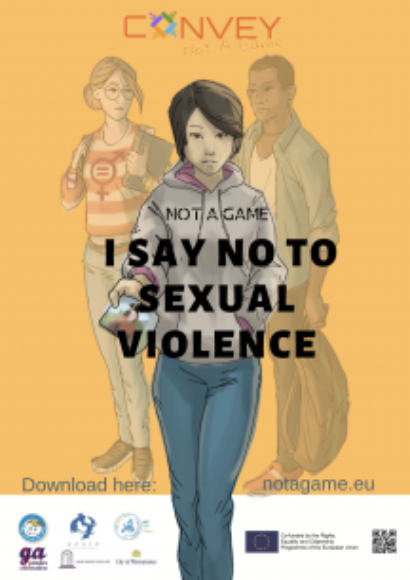
1. Project carriers:Anna Lindh Foundation
2. Beneficiaries: Young people aged 14-18 years old
3. Users: Educators, Schools, Parents and so on.
4. Need To promote attitudes and behavioral changes through education and awareness on the negative impact of sexual violence; on the importance of healthy relations; on overcoming gender stereotypes against women and girls, and on the role of social media as a vehicle for positive change.
5. Principle The key message of the campaign “I say NO to sexual violence”, did not tolerate any middle ground encouraging taking the initiative of saying NO through your actions, words and behaviours that can lead to violence. The main educational tool: CONVEY –Not A Game, is an investigation adventure where the player becomes a detective across 5 chapters, through mini-games, flashbacks and videos based on real testimonies of violence survivors. The tool can be applied better in conjunction with the deployment of the training workshops for students developed by the CONVEY project.
6. Main technologies involved HTML, CSS, JavaScript, APIs, videos, etc.
7. Sources https://www.annalindhfoundation.org/resources/good-practices/convey-digital-education-gender-equality
#eSkills4Girls
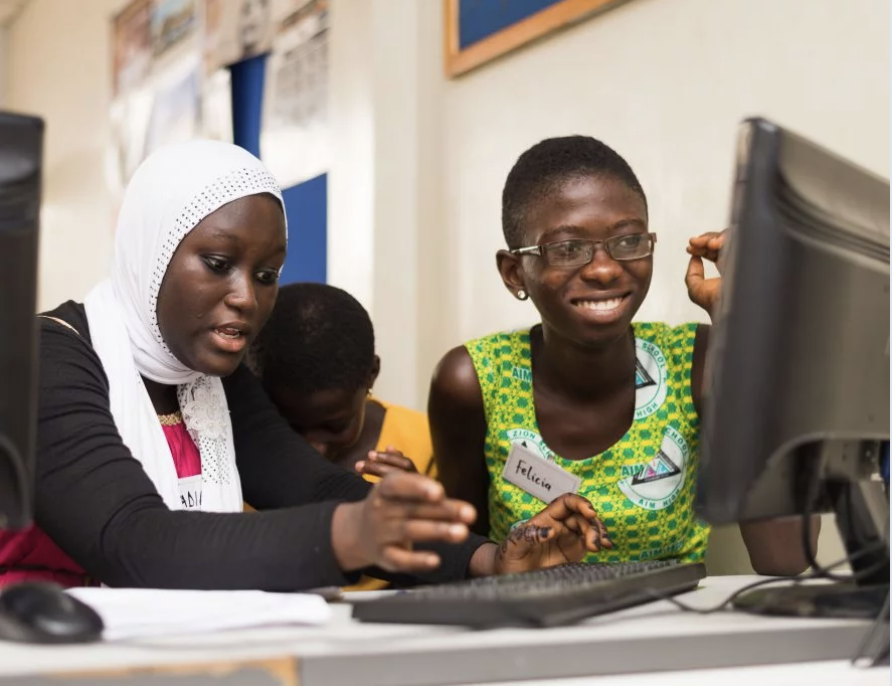
1. Project carriers: BMZ (Federal Ministry for Economic Cooperation and Development) CTSC (Cape Town Science Centre) EQUALS global partnership
2. Beneficiaries Women and girls across low and middle income countries
3. Users Women and girls from diverse socio-economic backgrounds
4. Need To advance women’s digital skills, active citizenship, and civic participation through technology in order to maximize impact and increase visibility of the proven and possible ways to enhance digital inclusion and skills, with the ultimate goal of narrowing the digital gender divide.
5. Principle
Identify and scale support for grassroots women leaders and activists to use ICTs for social change and entrepreneurship, and/or support them to become trainers themselves.
Support women-led movements and organizations (these include faith- based organizations, market women’s associations, etc.) to make greater use of ICTs in their work.
Support and promote female role models and internet users within communities.
Conduct gender-sensitive skills trainings and build collaboration across grassroots initiatives in digital skills.
Mainstream gender-responsiveness and sensitivity in the planning and execution of local initiatives and investments in digital skills
6. Main technologies involved HTML, CSS, JavaScript, APIs, videos, etc.
7. Sources https://www.equalsintech.org/eskills4girls-fund
#EducationShiftsPower
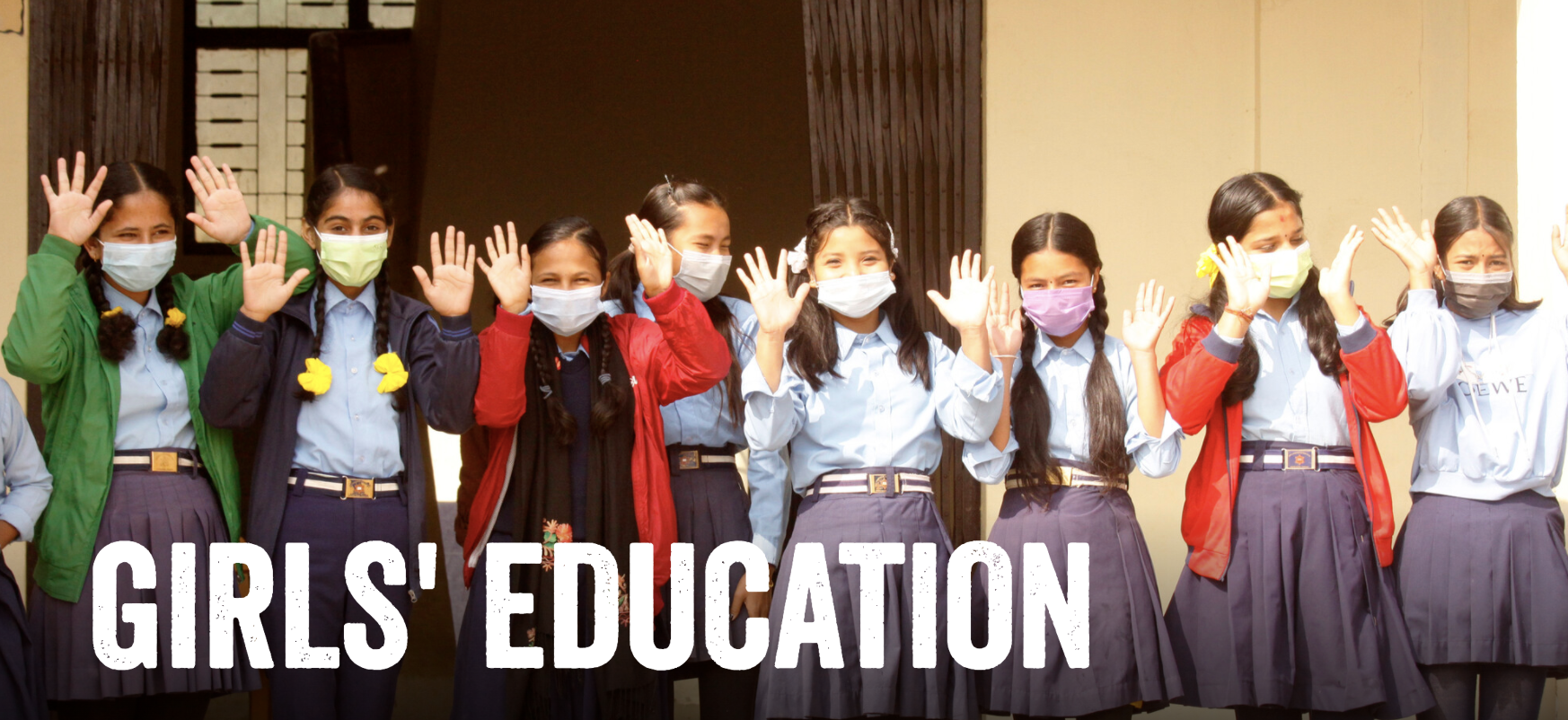
1.Project carriers: United Nations Girls’ Education Initiative (UNGEI) Plan International
2. Beneficiaries Girls and young women who are forced to quit school
3. Users Girls and young activists
4. Need A need for education that advances gender and climate justice, and demand young people are engaged in transforming education systems. A need for young women to demand their rights, hold decision makers to account, and challenge the status quo, including the systems and norms which reinforce gender and climate injustice around the world.
5. Principle They use key moments throughout the year (G7, GPE and COP26) to advocate for education that advances gender and climate justice and demand young people are engaged in transforming education systems (including in curriculum development and decisions on financing).
6. Main technologies involved HTML, CSS, JavaScript, APIs, videos, etc.
7. Sources https://plan-international.org/education/girls-education
Gender Equity Awareness Program
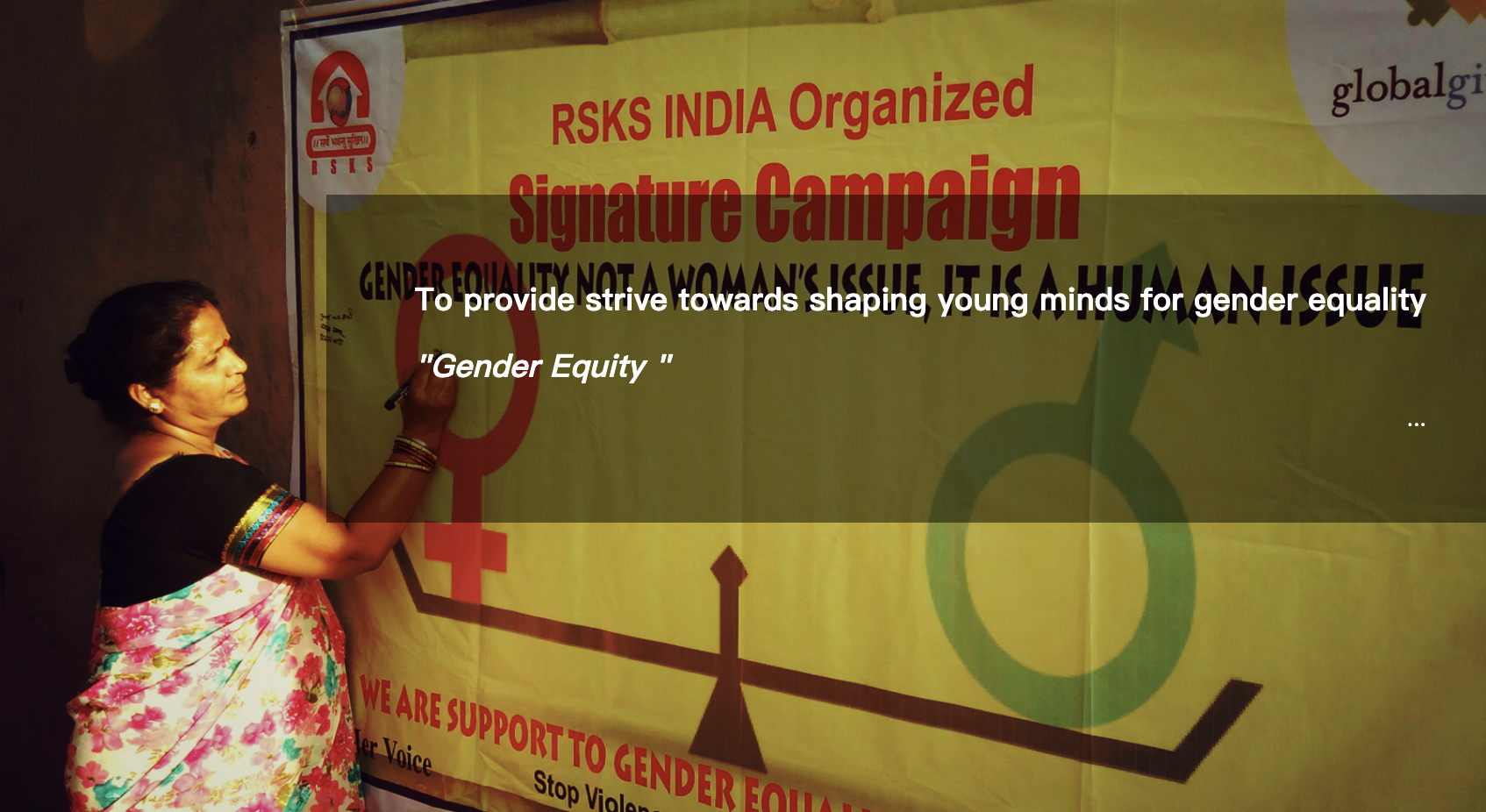
1. Project carriers: RSKS India
2. Beneficiaries Young girls and boys, women and men, as well as marginalized girls
3. Users Young girls and boys, women and men, as well as marginalized girls
4. Need
To provide strive towards shaping young minds for gender equality
To making aware of the long-term implication of the deteriorating sex ratio in the country.
To provide health and education for girls for a healthy nation.
To create a platform for them to bring about a sustainable attitudinal change
To empower girls through education & skill-based training
5. Principle This project strives towards shaping young minds of boys and girls for gender equality, making them aware of the long-term implication of the deterioration sex ration in the country, the importance of health & education for girls for a healthy nation. The project creats a platform for them to bring about a sustainable attitudinal change in them and in the perception of people in their community towards gender issues.
6. Main technologies involved HTML, CSS, JavaScript, APIs, videos, etc.
7. Sources https://rsksindia.ngo/Campaign-Advocacy/Gender%20Equity/
B. Deepening
CONVEY, Digital Education for Gender Equality
1. Project carriers: Anna Lindh Foundation
2. Beneficiaries: Young people aged 14-18 years old
3. Users: Educators, and young people aged 14-18 years old
4. Need
To promote attitudes and behavioral changes through education and awareness on the negative impact of sexual violence;
on the importance of healthy relations;
on overcoming gender stereotypes against women and girls,
and on the role of social media as a vehicle for positive change.
5. Principle The key message of the campaign “I say NO to sexual violence”, did not tolerate any middle ground encouraging taking the initiative of saying NO through your actions, words and behaviours that can lead to violence. The main educational tool: CONVEY –Not A Game, is an investigation adventure where the player becomes a detective across 5 chapters, through mini-games, flashbacks and videos based on real testimonies of violence survivors. The tool can be applied better in conjunction with the deployment of the training workshops for students developed by the CONVEY project.
6. Research question: How can we educate young people about sexual violence in a way that is serious but not traumatic or embarrassing?
7. The reason you selected this project I chose this project because education on sexual violence is very essential regards to gender equality, it is necessary for young people to learn about the negative impact of sexual violence and how to overcome gender stereotypes against women and girls.
User scenario
1. Users Young people aged 14-18 years old
FAndrea, 16 years old
She lives in the city in California, the U.S
High school student, no income
Live with her parents and her younger brother
She loves hiking and reading
She dreams to be a writer in the future
What frustrates her is that she doesn’t know how to get along with boys, she is too nice to say no sometimes.
Major issue related to the subject is that she needs to learn what she should know what should be regarded as the act of sexual violence and how to act against these bad behaviours.
3. Key features Users play 11 mini-games Users set up teams and invite friends to the team Users watch 9 video stories with real testimonies of survivors of sexual violence and of gender-based violence
4. UX storyboard
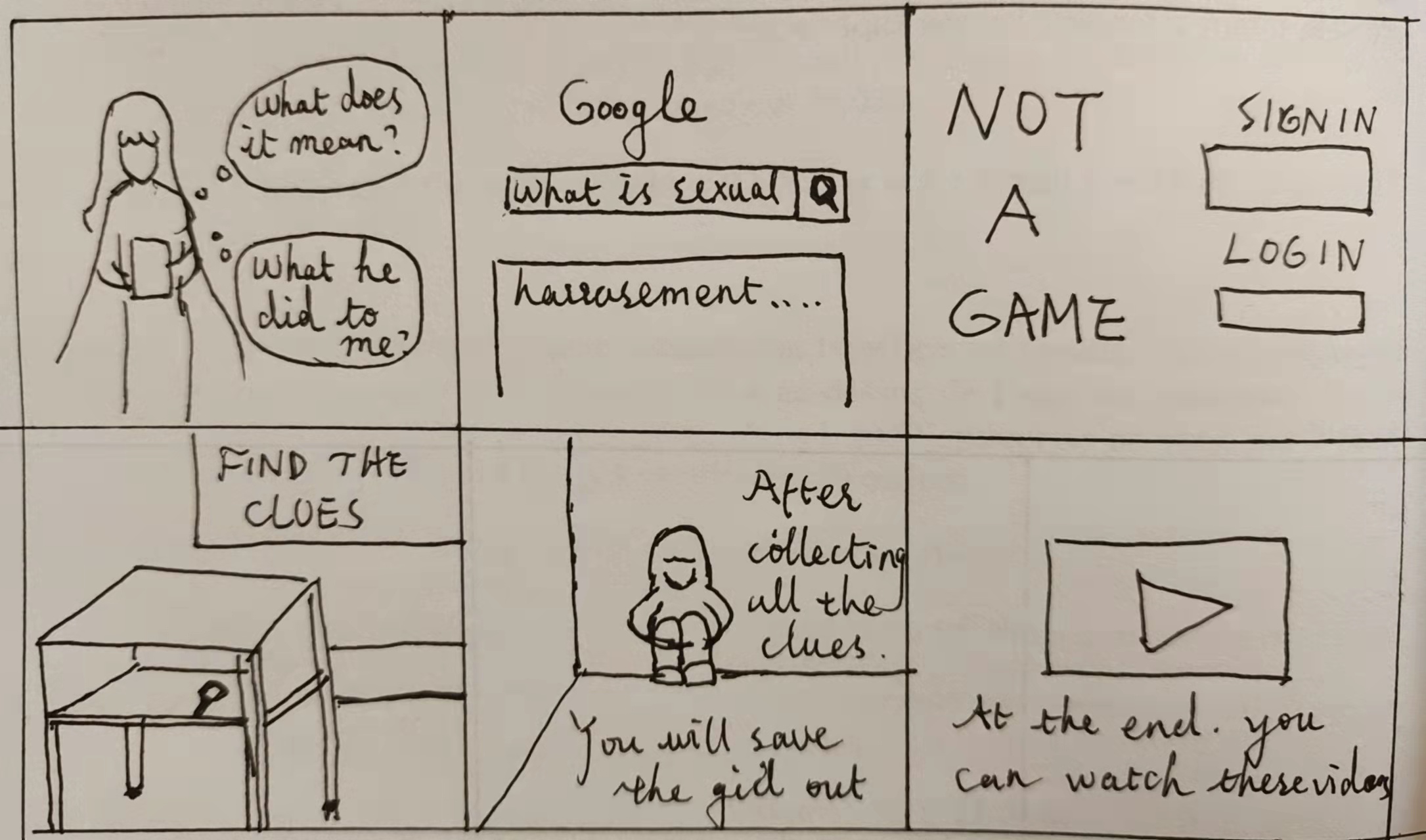
Technical analysis
1. General principle: Technically this project works through using an app “CONVEY-Not A Game”
2. Technical overview - API version • Which services' API(s) is (are) used? What other projects use these API? • Document the general purpose of these APIs and the main opportunities they offer: what kind of data can be accessed? Does the API offer the possibility to filter / sort the datas? • Which events trigger an API call? How are they set up? Filtered (examples: only if there is the hashtag #something)? • What kind of information is retrieved in your project? • How is it used in your project? Is it directly displayed to the user? Or after some modifications? Or never displayed?
1. Added value thanks to APIs The APIs helps the learning process much more interesting and engaging, it helps achieve the goal of educating young people about sexual violence.
Complementary sources • https://notagame.eu/